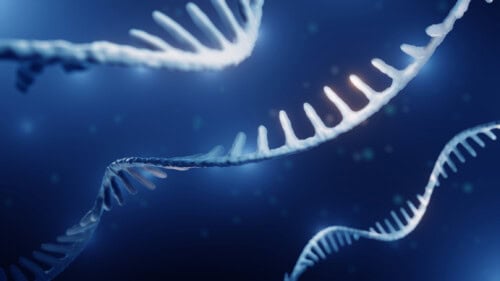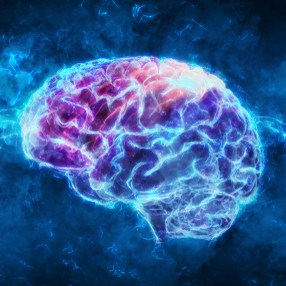As I’ve worked to find my niche as a “late-mid-career” psych-mental health nurse practitioner, I’ve often been alarmed by the disappearance of traditional psychotherapy from our practices. Intentionally, I came to this work to leverage my skills in neurobiology, pharmacology and interpersonal interaction to help others, so it seemed critical to find ways to maintain that integrated balance, even in the world of managed care in a post-pandemic era. I sought answers in the literature to soothe my own angst, and what I found was both illuminating and reassuring: High quality meta-analyses have consistently demonstrated that medications and psychotherapy work about equally well. They are even more effective when combined, as in epigenetics. However, there is a recurrent finding in the literature that indicates that psychotherapeutic theories and their associated technical operations do not significantly contribute to outcomes. And this, I think, is very important news!
Recommended course: Pharmacogenomics: Exploring Genetic Variation in Drug Metabolism and Utilization
Testing psychotherapeutic modalities
One meta-analysis concluded that different psychotherapeutic modalities all work about equally well. In fact, the authors found that it is patients’ own generative, self-healing capacities that allow them to take what therapies have to offer and use them to self-heal.
Hence, we see spontaneous recovery and favorable outcomes from activities like computer therapy, journaling, and the widespread use of various self-help materials. The researchers have found that effective therapy provides a safe setting, information, skills, and an “extended workspace” for thinking through problems and experimenting with potential solutions.
In 2009, Hubble et al. presented their transtheoretical model, which attempts to reframe and reprioritize the way we view and engage in therapeutic interactions, considering the fact that psychotherapists have historically overemphasized the technical and procedural aspects of our work.
Four common factors in psychotherapy
The transtheoretical model advances four “common factors” that are present in every type of psychotherapy, regardless of the particular modality. However, the most important of these include extratherapeutic factors and relationship factors, which (in essence) help us to acknowledge that, without a patient, therapy does not exist.
This represents a real departure from convention – since most of what is written about therapy celebrates contribution of therapist, model or technique. In this context, “extratherapeutics” are the most common and powerful of the factors, and they have been found to aid in recovery, despite patient’s formal participation in therapy.
Extratherapeutic neuropathology
While it’s helpful to take inventory of extratherapeutics as “what patients bring to the therapy room and what influences their lives outside it” (optimism/hope, affective state, stress arousal, social support, etc.), I believe that we can significantly expand this factor to thoughtfully consider extratherapeutic neuropathology, which includes:
- Nature: Genetic and environmental influences
- Nurture: Life experiences
- Neurobiology and neuroanatomy
Recommended course: Clinical Series Episode: The Gene-Drug Connection: Unlocking the Power of Pharmacogenomics
What is epigenetics?
The intersection of “nature and nurture” is probably best explained by the function of the human epigenome (additional DNA that does not code for new proteins but instead regulates the activity of genes that do). Epigenetics stands at the center of modern healthcare because epigenetic changes, unlike the DNA sequence (which is the same in every cell), can occur as a result of changing environmental variables.
Since the epigenome provides instructions and regulates functional aspects of all genes, we sometimes jokingly say, “It ain’t what you got; it’s what you do with it.” With minor exceptions, all differentiation processes are triggered and maintained through epigenetic mechanisms.
Keep in mind that the brain, foot, and heart all have identical DNA. It’s epigenetics that drives cellular differentiation, tissue specialization and gene silencing. In terms of mental illness, it’s important to consider the environmental epigenetics hypothesis, which states that environmental events activate intracellular signals that remodel the epigenome.
This leads to sustained alterations in genetic structure and function due to stable effects on gene transcription. Contemporary understanding of epigenetics — and perhaps the most noteworthy detail in the relevant research — is how gene expression is as heritable as the genes themselves.
When nature and nurture collide
The term “epigenetic” refers to all heritable changes in gene expression and chromatin organization that are independent of the DNA sequence itself. Research has shown that, when nature and nurture collide, epigenetic events occur. One such event is gene “silencing” through methylation, which is a relatively stable chemical change that inhibits acetylation of histones (preventing genetic expression). Conversely, transcriptionally active chromatin regions tend to be hyperacetylated and hypomethylated.
If a region of DNA or a gene is destined for silencing, chromatin remodeling enzymes such as histone deacetylases and ATP-dependent chromatin remodelers likely begin the gene silencing process. One or more of these activities may recruit DNA methyltransferase, resulting in DNA methylation, followed finally by recruitment of the methyl-CpG binding proteins. The region of DNA will then be heritably maintained in an inactive state. Gene silencing has significant implications for our understanding of the genetic and neurobiological drivers of mental illness – and many of our treatments, including medications, psychotherapies and somatic therapies.
The intersection of epigenetics and mental health
Mental illness is certainly based in genetics and epigenetics. It’s no accident that 50% of our 20,000 genes are expressed only in the brain. When we see reduced volume in brain structures, this almost always implies underactivity in specific brain regions. This could be due to over-pruning of dendritic trees and/or decreased plasticity (often related to epigenetic events).
This has been demonstrated in the hypothalamic-pituitary-adrenal axis, parts of the autonomic nervous system, the prefrontal cortex, the amygdala, locus coeruleus, the cingulate and even the peripheral brain. This gene-environment connection shows us how, unlike any other organ, the brain changes continuously in response to external and internal stimuli (verbal, tactile, visual, olfactory and chemical). Neural tissue also changes in response to experiences (stressful or pleasurable, real or imagined, emotional or cognitive).
When these regions are underactive (as demonstrated by decreased size and volume), we see predictable changes in characteristic functions like sensory registration, appraisal of external stimuli, formation of self-awareness and self-reference. This helps to explain some of the emotional lability and memory deficits that manifest with post-traumatic stress, for example.
Under stressful conditions, a patient’s ability to integrate higher-level thinking and emotion is impaired. This often leads to associated incapacitation of the patient’s ability to engage in affective self-regulation (Grezenko et al., 2023).
Another well-studied example is the role of the orbitofrontal cortex as a coordinating and integrating center for several mental functions, including explicit/autobiographical memory, interpretation of social references and non-verbal communication of primary emotion. These functions, together, determine an individual’s degree of response flexibility. The notion of emotional dysregulation and profound inability for emotional self-regulation is well-demonstrated in research with depressed mothers and their children (Koutra et al., 2017).
Epigenetics, psychiatric disorders, and the nurse practitioner
The most exciting implications of gene-environment interactions are endless possibilities to exploit and manipulate epigenetics to prevent or ameliorate psychiatric disorders. Adaptive phenotypic plasticity, the epigenetic activation of genes that regulate neuronal energy supply and trophic support, has been shown to support adaptation over the short-term (and is probably the driving force behind evolution).
This is where the work of the nurse practitioner derives its value: Every therapeutic encounter has power! This is the basis of interventional epigenetics — and a cornerstone of the precision medicine movement (Ptak & Petronis, 2010).
Pharmacology and epigenetics
Consistently, newer psychotropics (antidepressants, mood stabilizers and second-generation antipsychotics) have been shown to induce synaptogenesis, neurite extension and neurogenesis. Psychotropics can activate genes. They can offer neuroprotection from the toxic effects of recurrent mania, psychosis and depression. In some cases, they may increase the secretion of growth factors (brain-derived neurotrophic factor, nerve growth factor, and fibroblast growth factor). Psychotropics may also support tissue regeneration in the face of serious psychopathology.
As with pharmacotherapy, repeated doses of psychotherapy also exert a cumulative effect, consolidating therapeutic gains. Psychotherapy refurbishes the patient’s brain structure at the molecular level. This helps restore resilience to brain-mind system that was compromised by genetic factors or environmental stress.
Cognitive-behavioral therapy (CBT), for example, has been shown to produce changes in the dorsal and frontal cingulate, hippocampus and amygdala. These changes lead to improvement in vegetative symptoms and the patient’s ability to register and process stimuli without ruminating.
Precision healthcare: Integrating epigenetics, pharmacology, and psychotherapy
Precision healthcare offers a context in which to refine a treatment approach, which may include medications, counseling/psychotherapy and somatic interventions. Insights into genetics and epigenetics serve as the basis for understanding illness. They help outline a window to truly personalize treatment options for patients. Of import here are molecular targets for neurotransmitter and receptor encoding. Also important are enzymes (genomic testing to assess alleles for drug action and metabolism).
For example, genome-wide association studies (GWAS) have identified a number of novel genes that impact antidepressant medication response. The Consortium of Lithium Genetics identified interactions between valproate and lamotrigine. These genes encode for the stress response of the endoplasmic reticulum and drug metabolism (Schulze, et al., 2010). Subsequent GWAS have correlated genetic variants within the serotonin and dopamine system and CYP2D6 metabolism to the pharmacology of second-generation antipsychotic medications (Collins & Sullivan, 2017).
These studies have also sought to produce insights into individual patient risks for medication side-effects. For example, there is an association between:
- The serotonin receptor gene (HTR2C), leptin genes, and weight gain
- Suicidal ideation (associated with “risk loci” on the genes CREB1, BDNF, ADRA2A, and GRIA3)
- Antidepressant-induced mania (the short variant of the serotonin-transporter-promoter region, 5HTTLPR)
- Clozapine-induced agranulocytosis (an anomaly at HLA-DQB1 locus)
The therapeutic restructuring of neural pathways
Disease and treatment models that equally consider patient genetics (nature) and environment (nurture) innately appeal to our nursing strengths. Conceptualizing “what’s wrong” and “what do to about it” in this context empowers us to fully leverage concepts of neuroplasticity.
The convergence of psychotherapy and psychopharmacology, results in robust, demonstrable therapeutic restructuring of neural pathways. Through this lens, harnessing the power of adaptive phenotypic plasticity at its epigenetic roots is the epitome of Art and Science in advanced practice psychiatric nursing.
References
- Collins, A. L., & Sullivan, P. F. (2013). Genome-wide association studies in psychiatry: what have we learned?. The British journal of psychiatry : the journal of mental science, 202(1), 1–4. https://doi.org/10.1192/bjp.bp.112.117002
- Duncan, B.L, Miller, S.D., Wampold, B.E., Hubble, M. A. (2009). The Heart and Soul of Change: What works in therapy, (2nd edition). American Psychological Association.
- Grezenko, H., Ekhator, C., Nwabugwu, N. U., Ganga, H., Affaf, M., Abdelaziz, A. M., Rehman, A., Shehryar, A., Abbasi, F. A., Bellegarde, S. B., & Khaliq, A. S. (2023). Epigenetics in Neurological and Psychiatric Disorders: A Comprehensive Review of Current Understanding and Future Perspectives. Cureus, 15(8), e43960. https://doi.org/10.7759/cureus.43960
- Koutra, K., Roumeliotaki, T., Kyriklaki, A., Kampouri, M., Sarri, K., Vassilaki, M., Bitsios, P., Kogevinas, M., & Chatzi, L. (2017). Maternal depression and personality traits in association with child neuropsychological and behavioral development in preschool years: Mother-child cohort (Rhea Study) in Crete, Greece. Journal of affective disorders, 217, 89–98. https://doi.org/10.1016/j.jad.2017.04.002
- Ptak, C., & Petronis, A. (2010). Epigenetic approaches to psychiatric disorders. Dialogues in clinical neuroscience, 12(1), 25–35. https://doi.org/10.31887/DCNS.2010.12.1/cptak
- Schulze, T. G., Alda, M., Adli, M., Akula, N., Ardau, R., Bui, E. T., Chillotti, C., Cichon, S., Czerski, P., Del Zompo, M., Detera-Wadleigh, S. D., Grof, P., Gruber, O., Hashimoto, R., Hauser, J., Hoban, R., Iwata, N., Kassem, L., Kato, T., Kittel-Schneider, S., … McMahon, F. J. (2010). The International Consortium on Lithium Genetics (ConLiGen): an initiative by the NIMH and IGSLI to study the genetic basis of response to lithium treatment. Neuropsychobiology, 62(1), 72–78. https://doi.org/10.1159/000314708






